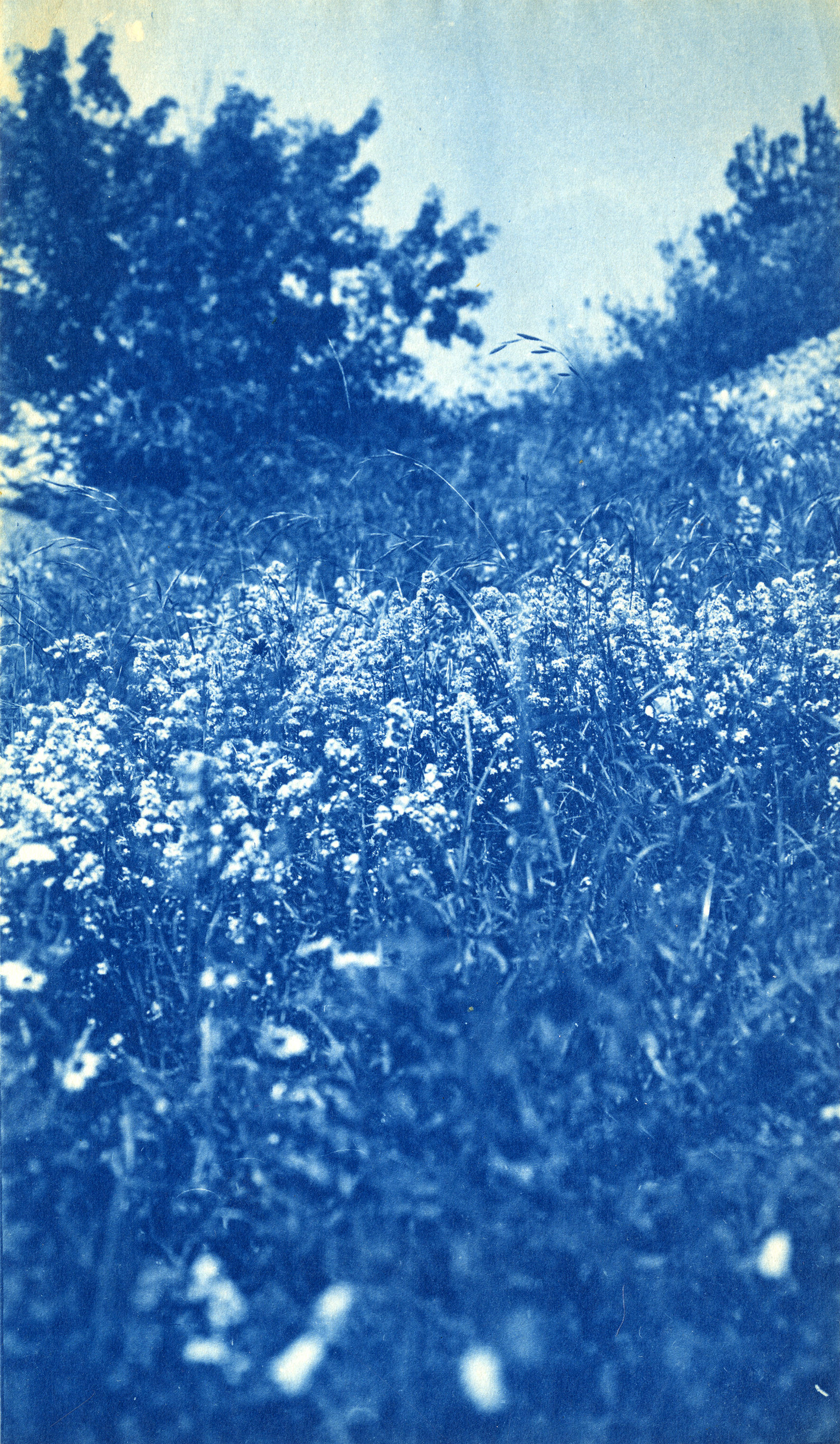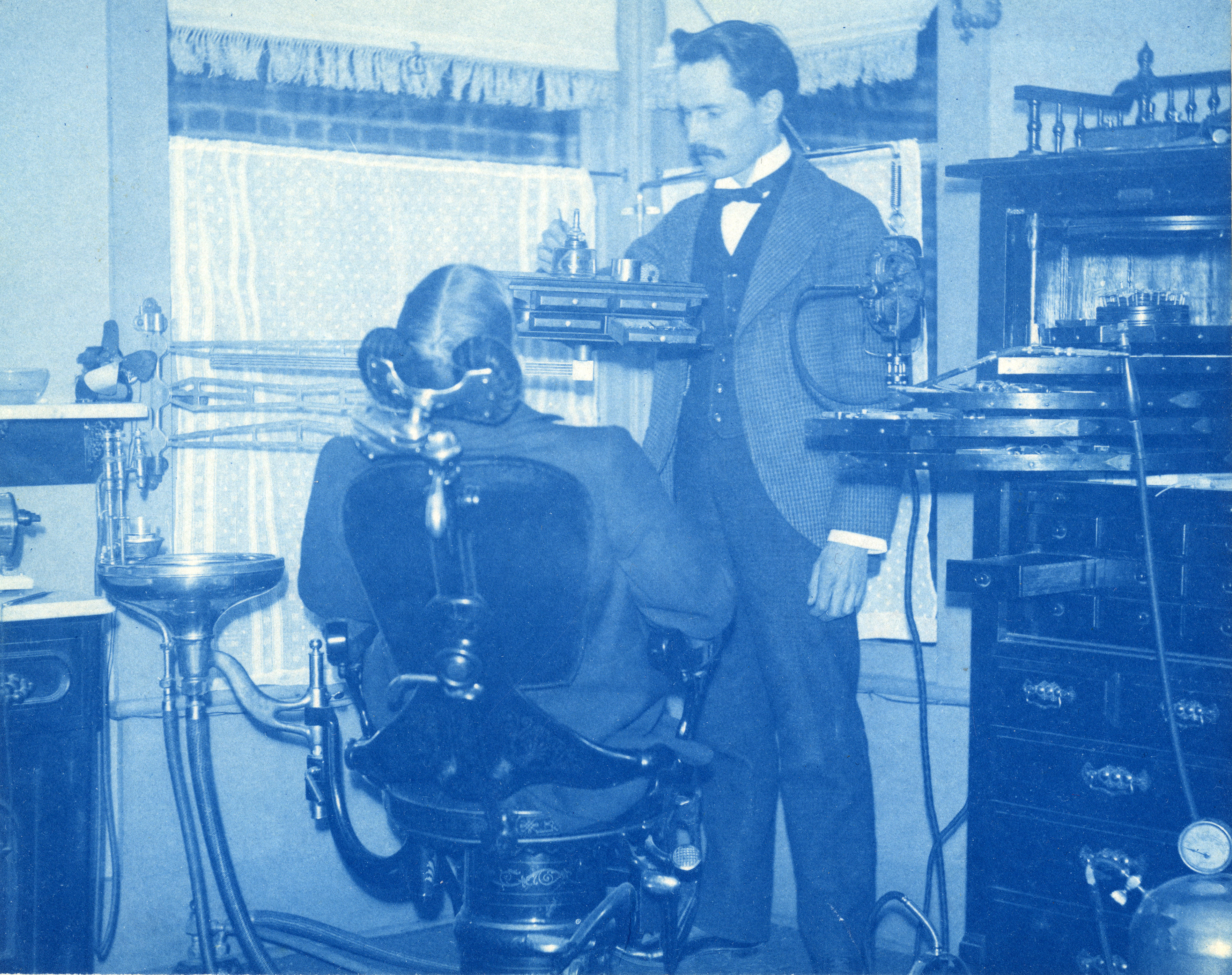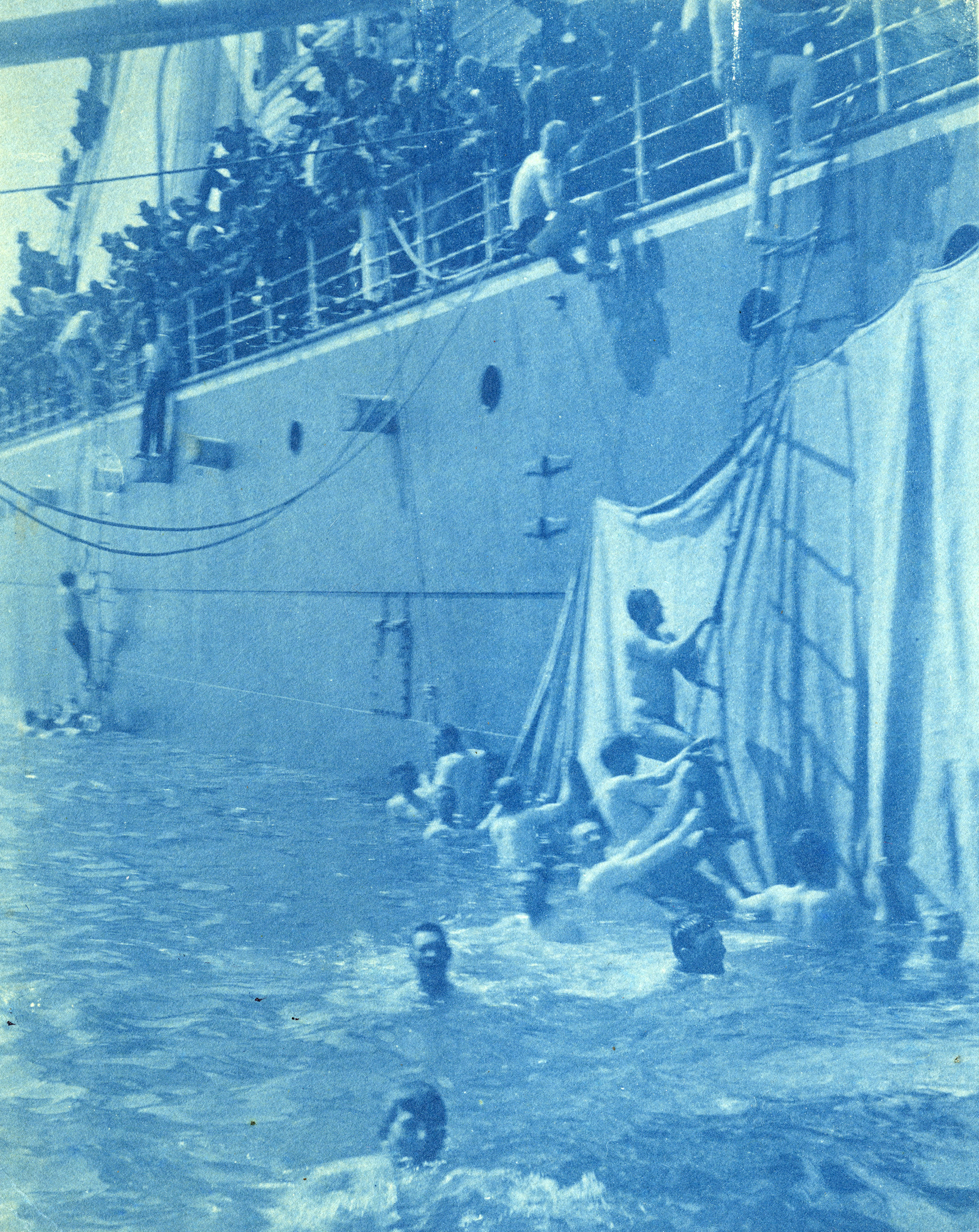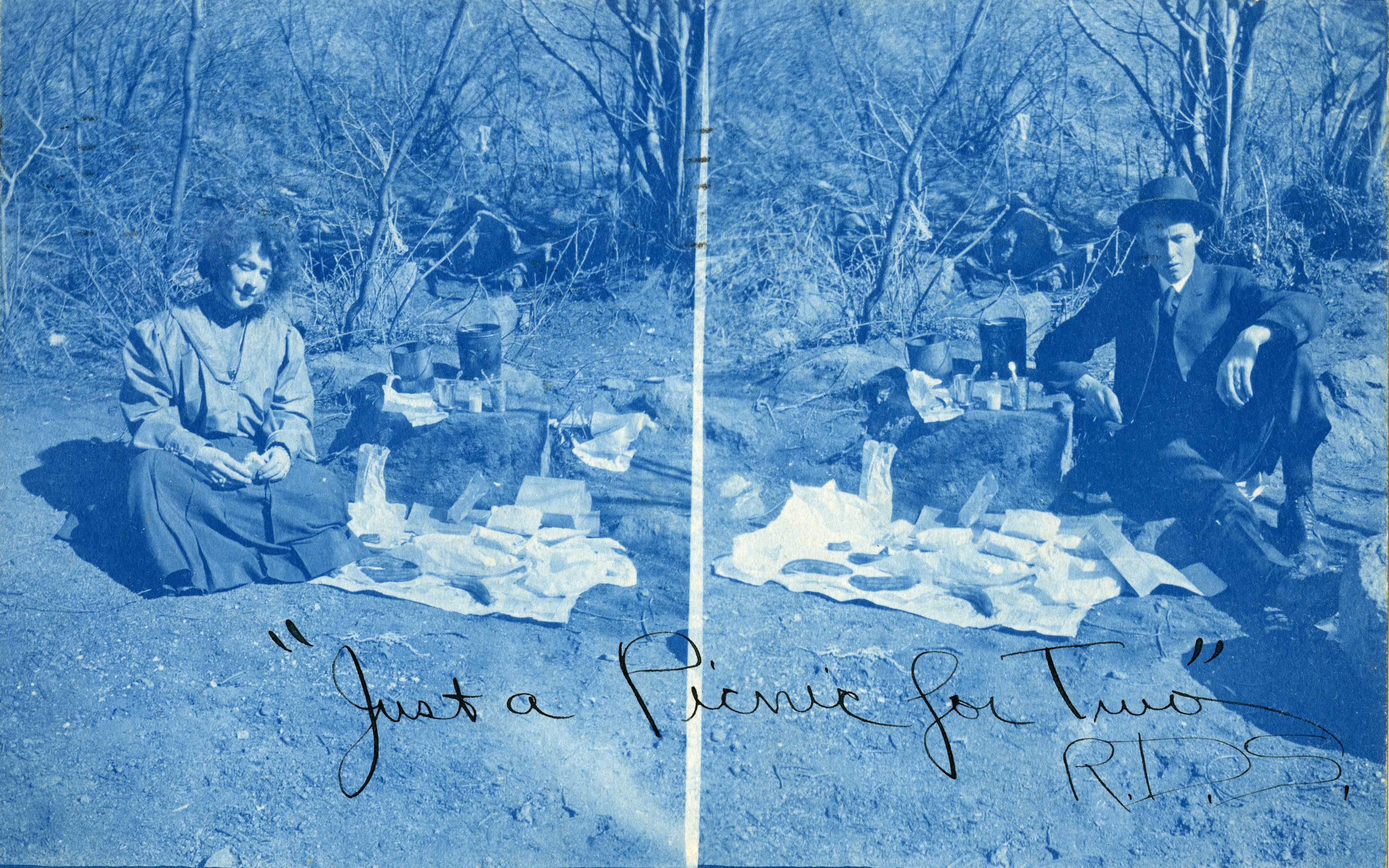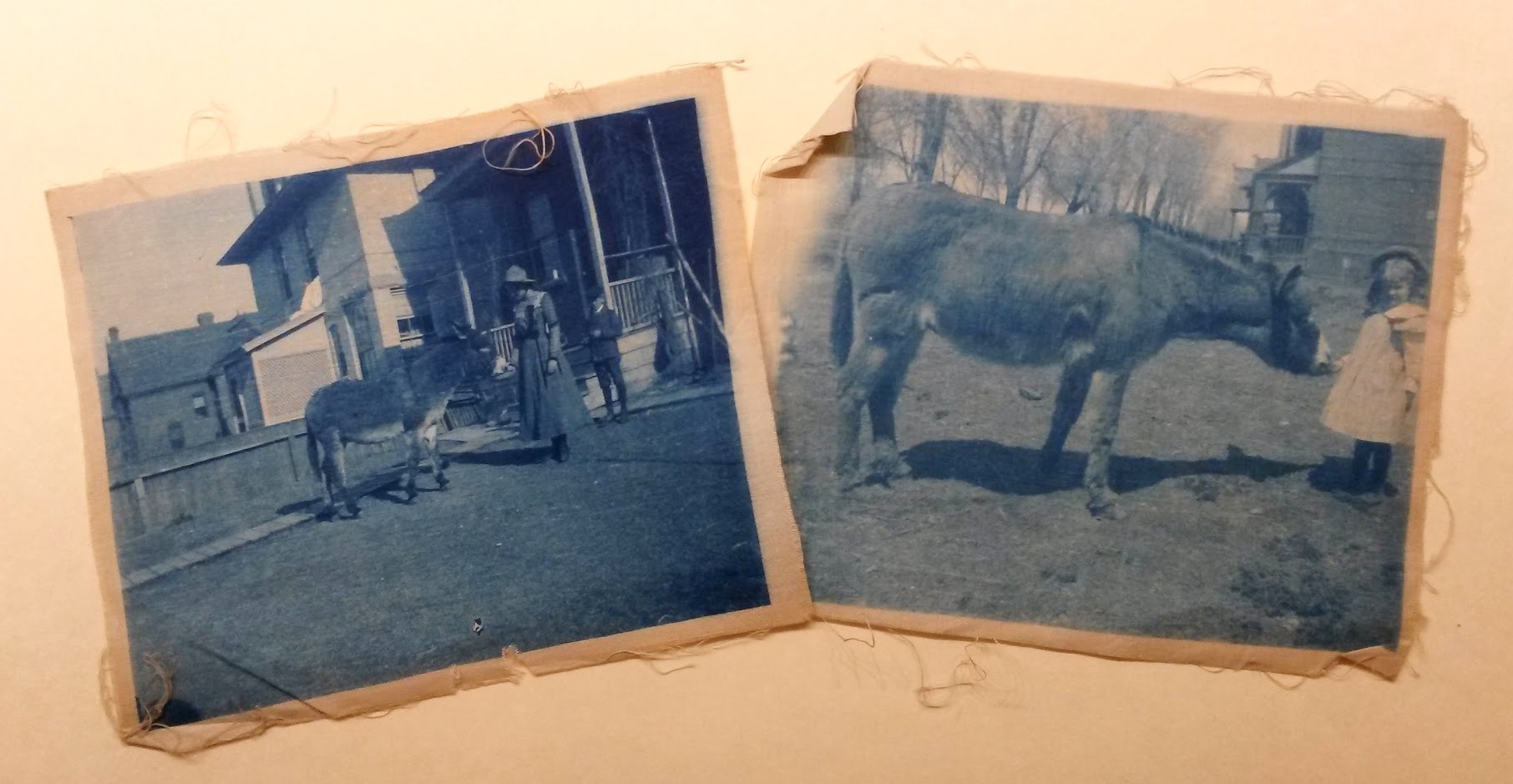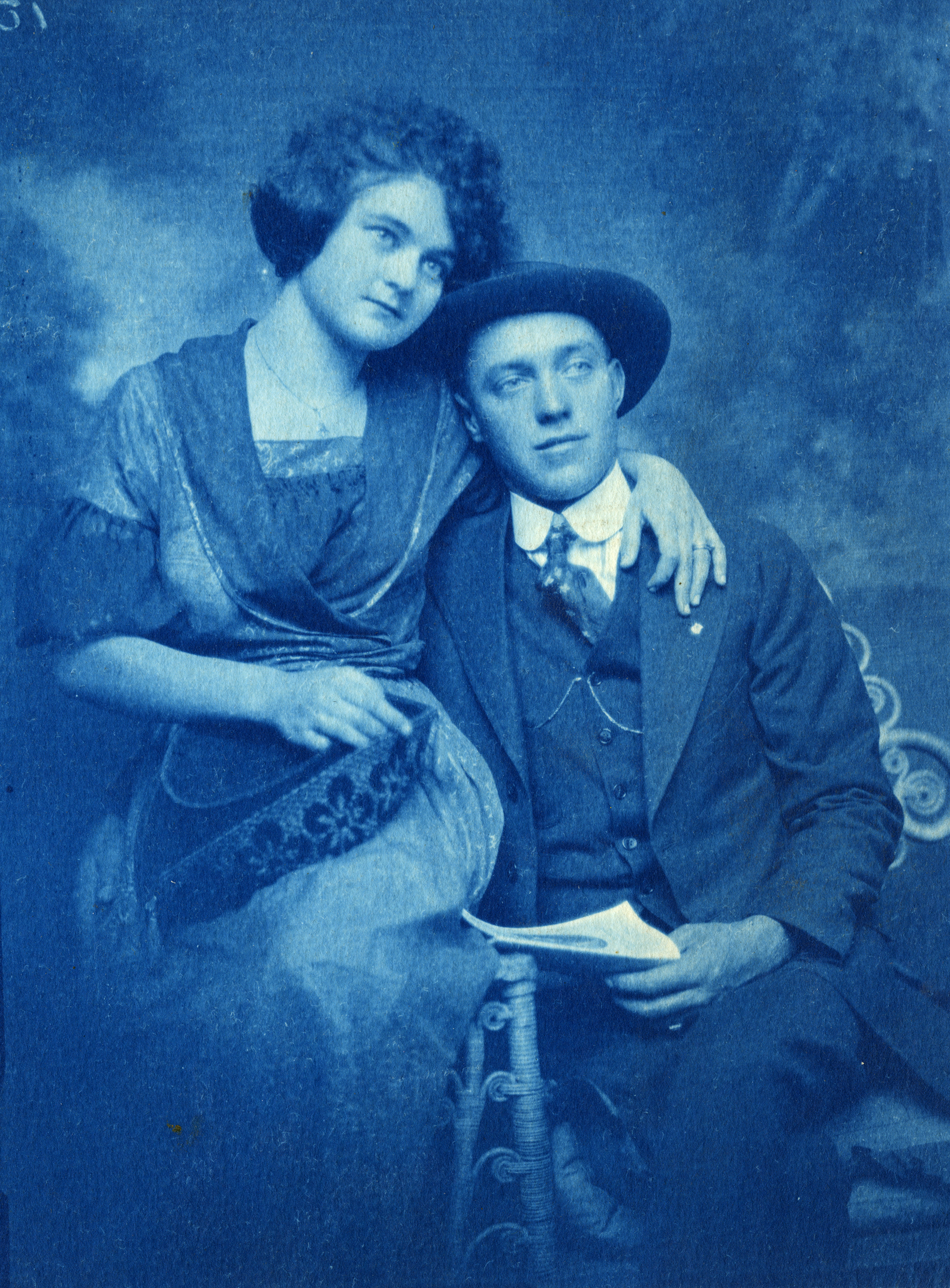
Story
What in the World is a Cyanotype?
You may have seen them, with their distinctive blue and white images, but did you ever want to know more about cyanotypes? Come with me on a brief journey to learn more about this unique photographic process!
First, let’s talk about the word cyanotype. It comes from the Greek word cyan, meaning “dark-blue impression.” So, the cyanotype is a photographic process that creates an image that has blue tones instead of the brownish tone of albumen prints or the gray and black tones of silver gelatin prints. The color comes from using iron salts instead of the silver salts typically used in photography, and is also called “Prussian blue.” This is the same method first used to create blueprints and was standard for that purpose until the 1950s.
Although the British astronomer and chemist John Frederick William Herschel (1792–1871) invented the cyanotype in 1842, photographers didn’t commonly create them until about 1880. By that time they’d found the process to be a cheap and quick way to proof their prints before using more costly silver- or platinum-based processes. The cyanotype remained a popular format for professional and amateur photographers alike until the mid twentieth century.
Cyanotypes are pretty easy to identify by their blue color. Although they aren’t the only way to create blue-toned images, if you’ve seen blue photos they’re almost assuredly cyanotypes. Most were printed onto whatever paper was handy at the time or pre-sensitized paper that was very thin and therefore affordable. Because of the relatively low quality of the paper, they aren’t always well supported and can be easily torn, creased, and punctured. Although it’s uncommon, photographers sometimes printed cyanotypes on cloth!
Another hallmark of the cyanotype is its sensitivity to light. All photos deteriorate when exposed to light, especially UV light, for long periods of time. But cyanotypes are on the more sensitive end of the spectrum. They’re unique, however, in that some of the lost image can be regained by storing them in the dark.
We have cyanotypes sprinkled throughout our photography collections here at History Colorado. Did I mention that the cyanotype is my favorite photographic process? They’re always a joy to come across and they give me a thrill every time.

